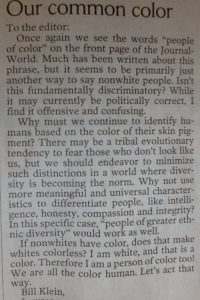Early on in 2017 I had two conversations that set me on the path of learning about maps. One was with Mike Gaughan, who suggested that it might be possible to identify neighborhoods in Kansas with larger-than-normal numbers of unregistered voters. The other was with Paul Davis, who suggested that it might be possible to identify Kansas state legislature districts that could be flipped with targeted outreach to just a few neighborhoods.
I knew that one of the big issues affecting election outcomes was how the maps get drawn for political districts: state legislative districts, congressional districts, etc. But how did those political district boundaries correspond to the votes that are cast? No one seemed to have a map that could show me, for any given district, how the votes in that district for a given election correspond to streets and addresses. Or how did a particular neighborhood vote from one election to the next. State elections can often be decided by dozens of votes, so knowing how a particular neighborhood votes (or fails to vote), from year to year, could be a significant datum to understand.
I realized that it was hard to take a research and data-driven approach to a geographic problem without good geographic data. And none of the Democrats I spoke with seemed to have that data. So I decided I was going to create a map-oriented research tool for elections over time.
The Map Is Not The Territory
One fact in particular made the map data hard to acquire and use. Election results are reported to the Kansas Secretary of State at the county level. Each county clerk tallies up the votes (a process called certifying an election) and sends those numbers to the SoS office. Kansas has 105 counties. If you look at a map of Kansas counties, one thing you will quickly realize is that they are all mostly the same size and shape. That’s because the county boundaries were drawn very early in the state’s history without regard to where people lived and without knowing where they would settle a century later. County boundaries ignore population and they do not change over time.
Political district boundaries, however, are entirely about population and they change over time based on relative movements in the population. The idea around equal representation is that each district has roughly the same number of people, not the same number of acres. This is what gives political map drawing its power, because the political district boundaries could be drawn in carefully constructed ways to maximize a particular kind of voter in a given district.
So elections are reported by counties. Counties are about land size and don’t change. Districts are about population and change frequently. To borrow a math metaphor, what is the least common denominator?
The Precinct
The precinct is a geographic boundary that aligns with a political boundary. Every county is made up of one (often dozens) or more precincts. Every ten years the county clerk’s office divides the county into territorial entities in order for the federal government to count all the people in the census. Those territorial entities are called census tracts. Everyone gets counted in exactly one (we hope). Each census tract is also a voting district, or precinct. (It gets more complicated in the ten years between census takings. Read on for more.)
Most significantly, political district boundaries align with precinct boundaries. In your precinct, you belong in exactly one state house district, one state senate district, one congressional district. A political district is, in other words, the sum of its precincts. (Precincts are also vital to how political parties work, which will be the subject of another post.)
So if I wanted a map that would show, over time, how Kansans in specific neighborhoods vote, or if there were neighborhoods with a predictably low voter registration or turnout record, I would need reliable precinct-level election data, voter registration data, and I would need precinct-level map coordinates in the form of shapefiles.
Seemed straightforward enough at the time, I thought. I just need to look around on the internet and between the SoS website and the census.gov website, I’m sure I’ll find everything I need.
Oh foolish, silly, naive man. I look back on you now and chuckle at your enthusiasm. Of course, if I had known how hard it was to acquire those data and make sense of them over time, I might not have started in the first place. Deceptively simple problems get a lot of yaks shaved.
Fortunately, I quickly stumbled upon other people who were thinking the same things about maps and precincts, and other people who had been working hard at the precinct election data problem for a long time. I was able to follow in their footsteps.
In my next post I’ll dive into the nitty gritty of the challenges I encountered building the map.
